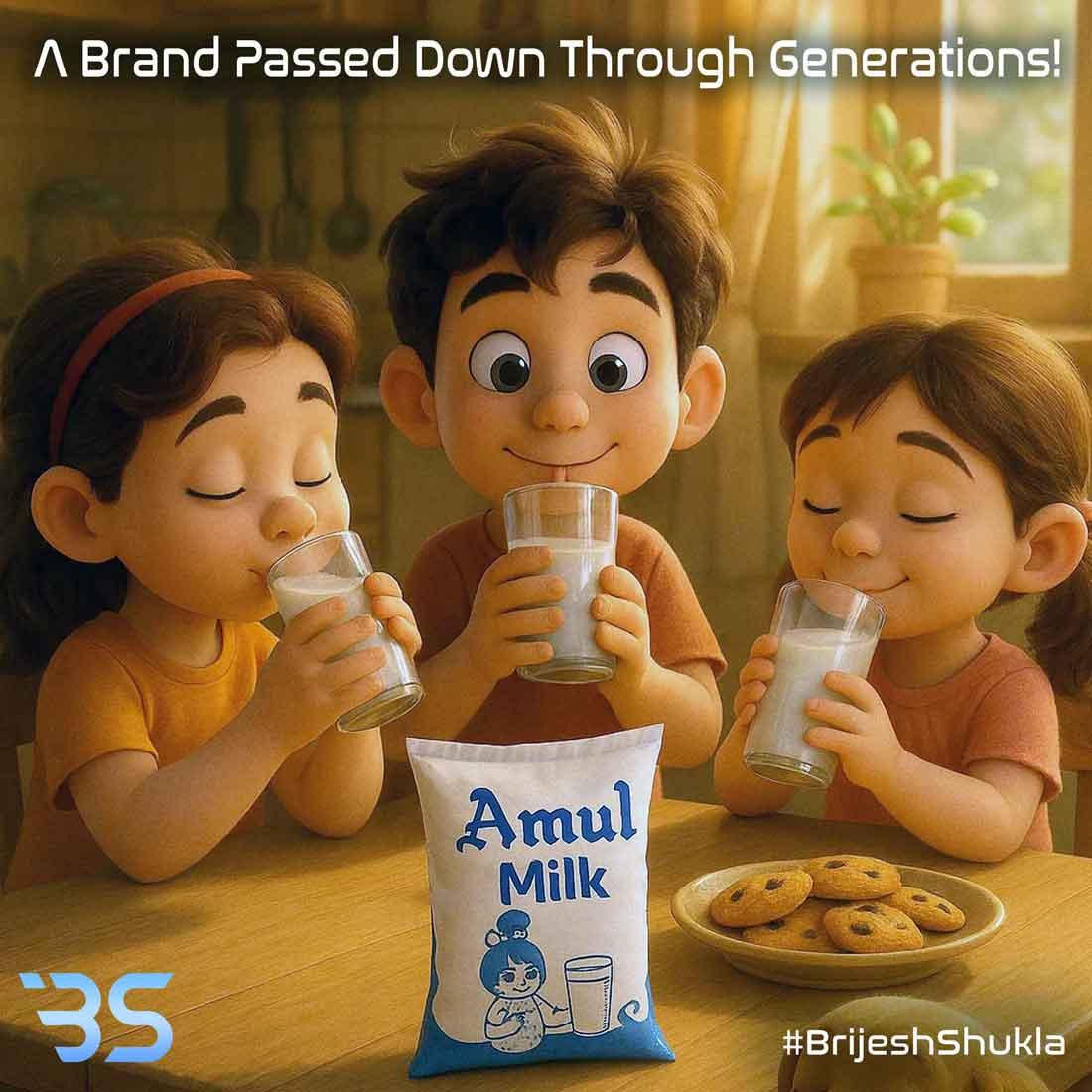Brijesh Shukla
Brijesh Shukla (Mr. Brilliant) AI - Artificial Intelliigence

In a country as diverse as India, few brands have managed to unite people across languages, cultures, and generations like Amul. For over 75 years, Amul has not just been a dairy brand it has been a part of India’s family, passed down from grandparents to grandchildren, a timeless symbol of quality, trust, and nostalgia.
But what makes Amul more than just a brand? How did a cooperative movement from Anand, Gujarat, become the undisputed "Milk of India"?
Amul (Anand Milk Union Limited) wasn’t just a business it was a rebellion. In the 1940s, Indian dairy farmers were exploited by middlemen, paid unfairly for their milk. Under the leadership of Verghese Kurien (the "Milkman of India") and inspired by Sardar Patel, farmers in Gujarat formed a cooperative.
This wasn’t just about selling milk it was about empowerment. The "Amul Model" became a blueprint for rural prosperity, proving that when farmers unite, they can build an empire.
Amul isn’t just butter or milk, it’s a part of India’s daily life:
The Amul Girl – One of India’s longest-running ad campaigns, witty and timely, commenting on politics, sports, and pop culture.
"Utterly Butterly Delicious" – A tagline that has stayed relevant for decades.
The Taste of Childhood – From Amul butter on toast to Amul ice cream, it’s a flavor every Indian remembers.
Amul didn’t just sell products, it sold memories.
In a world where brands come and go, Amul has stood the test of time because:
✅ It never compromised on quality – From milk to cheese, every product carries the same trust.
✅ It remained farmer-first – Profits go back to the milk producers, not corporate giants.
✅ It adapted without losing its soul – From traditional milk delivery to modern dairy innovations, Amul evolved while staying true to its roots.
People don’t just buy Amul, they believe in it.
Why does Amul still dominate when global brands struggle in India?
Emotional Connection – It’s not a foreign multinational; it’s "our" brand.
Consistency – The taste of Amul butter today is the same as it was 30 years ago.
Cultural Relevance – The Amul Girl’s humor keeps it young, even after decades.
Amul didn’t chase trends, it became a tradition.
Today, Gen Z might order gourmet cheese online, but they still reach for Amul’s processed cheese for their midnight maggi. Millennials may drink almond milk, but they won’t replace Amul’s classic butter.
That’s the magic of Amul, it doesn’t get replaced; it gets inherited.
Amul is more than a dairy brand, it’s a lesson in legacy. It shows that success isn’t just about profits; it’s about staying relevant while remaining authentic.
As long as India wakes up to tea with Amul milk, as long as kids smear Amul butter on their parathas, and as long as the Amul Girl keeps smiling from billboards, this brand will remain immortal.
Amul isn’t just the "Taste of India." It’s the taste of home.
Your email address will not be published. Required fields are marked *